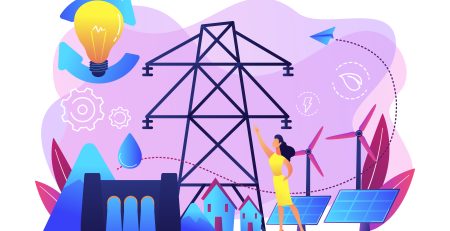How US Renewable Energy Policies Benefit Consumers and the Environment
The energy sector in the United States is experiencing a period of dynamic change. Fossil fuels are being retired to make way for cleaner and cheaper energy sources. The United States has adopted many policies to shape the future of energy in our Nation.
The US government has encouraged the adoption of renewable energy technologies through various policies and incentives, benefiting consumers and the environment in numerous ways.
Examples of US Renewable Energy Policies:
Several key policies at the federal and state levels are driving the shift toward renewable energy:
- Renewable Portfolio Standards (RPS): These policies mandate that utilities produce a growing percentage of their electricity from renewable sources. This creates a consistent demand that drives investment and growth in the renewable energy sector.
- Tax Credits: It is recommended for people and companies to invest in renewable energy technologies, such solar panels and wind turbines through federal and state tax credits. This lowers the initial costs and makes renewable energy solutions more attractive.
- Research and Development Investment: government support for research and development of renewable energy technologies is essential for driving innovation and making renewables more efficient and cost-effective.
Now, let’s discuss how these policies have positively impacted consumers and the environment.
Environmental Benefits
The most compelling benefit of US renewable policies is their positive environmental impact. These policies incentivize the development and use of clean energy sources, resulting in:
- Reduction in Energy Cost: lower energy costs from renewable sources mean less dependence on fossil fuels like coal, oil, and gas. Burning fewer fossil fuels reduces greenhouse gas emissions, leading to lower carbon footprints and mitigating the effects of climate change.
- Reduced Greenhouse Gas Emissions: renewable energy sources produce little to no greenhouse gases when generating electricity. This combats climate change, mitigating devastating impacts like extreme weather events and rising sea levels.
- Improved Air Quality: burning fossil fuel pollute the air with harmful particles and pollutants. By promoting renewables, the United States can significantly improve air quality, leading to a healthier population and reduced respiratory illnesses.
- Conservation of Natural Resources: unlike fossil fuels that can finish, renewable energy sources are replenished naturally. This promotes sustainable energy practices and reduces our dependence on non-renewable resources.
- Fewer Greenhouse Gas: reduced reliance on fossil fuels means fewer greenhouse gas emissions from transportation and extraction associated with fossil fuel imports. As a result, this contributes to the fight against climate change and protects ecosystems from fossil fuel extraction’s negative effects.
- Environmental Preservation and Public Health: reduced pollution from renewable energy sources helps preserve ecosystems, protect biodiversity, and mitigate climate change’s negative. This benefits both the present and future generations by ensuring a healthier and more sustainable environment.
Benefits to Consumer
The United States renewable energy policies are not just beneficial to the environment; they offer significant benefits to consumers and the economic:
- Reduction of Energy Costs: one of the most direct benefits of renewable energy policies for consumers is the potential for reduced energy costs. As renewable energy becomes more efficient and affordable, consumers benefit from lower electricity prices. Additionally, tax credits and incentives for installing solar panels or using renewable energy providers can further reduce costs.
- Job Opportunities: the renewable energy sector is a booming industry, creating jobs in manufacturing, installation, maintenance, and research development. This translates
to a more robust economy and increased opportunities for skilled workers. These jobs support local economies in addition to offering employment opportunities.
- Energy Security and Independence: by relying more on domestic renewable resources, the United States can reduce dependence on foreign oil and gas, leading to greater energy security and less vulnerability to fluctuating global energy prices.
- Improved Public Health: The shift to renewable energy sources reduces air and water pollution, leading to improved public health. Cleaner air and water mean fewer health problems related to pollution, such as respiratory illnesses and waterborne diseases. Thus, the amount spent on these health issues will be reduced.
Conclusion
The transition to renewable energy comes with challenges. Integrating renewable energy sources into existing infrastructure requires investment, solid strategies, and policies. The United States’ renewable energy policies have played a key role in driving sustainable and environmentally friendly energy transitions. These policies offer significant benefits to consumers and the environment, too. In the United States, as renewable energy becomes increasingly important, the positive impacts on consumers and the environment are expected to grow, leading to a cleaner, more prosperous future for all.











Leave a Reply